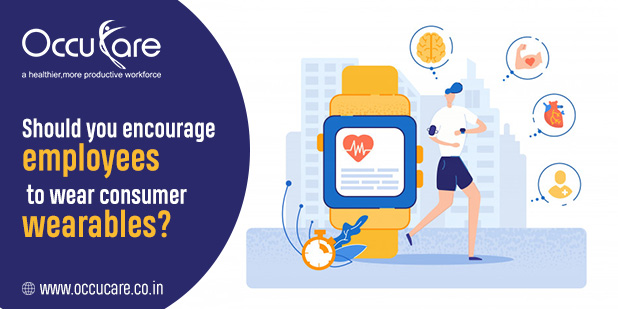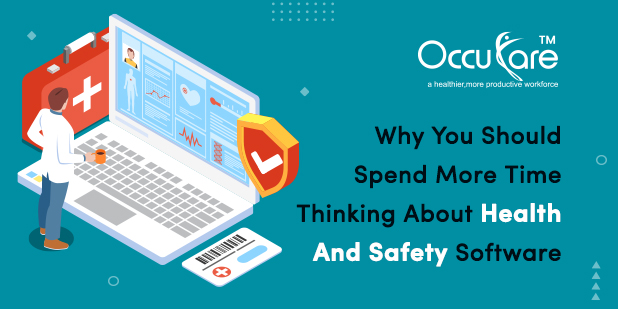Today’s workplaces are becoming increasingly diverse – and while that is a good development in itself, the diversity of different generations and personalities all have varying, often mutually contradictory ideas about how a
workplace should be.
This relates in a major way to wearables. What is a useful, sophisticated gadget that helps to improve the efficiency
of some people’s jobs, for others it is an infringement into their own privacy. Therefore, companies should not rely
on a one-size-fits-all approach but should consider the background for each employee of any wearable amenity.
Wearable technology can enhance conditions in the workplace further by identifying stress (and the reason behind it) of all employees. Inside an organization, human resources may use them to determine the ways workers spend
their time in some areas of the business and how to improve their behavior for the better.
Fitness trackers are fairly self-explanatory-they track heartbeat rate, blood pressure, calorie intake, distance
walked or run, and other health status indicators.
These wearables can be wrapped around the wrist or a hip, attached to the clothes or bracelet, and even
implemented through GPS tracking in running shoes with sensors.
In order to monitor data more accurately, fitness trackers can be integrated with mobile apps, so that individuals
using them can be confident that their measurements are correct.
Although life-saving equipment such as pacemakers has long been a staple of medicine, even higher-tech
prosthetics and embedded electronic monitoring are becoming a daily part of health care and medicine.
This wearable health tech and applications will help identify the health problems and how serious they are,
offering a critical change in rehabilitation and progress for patients. Some of the most advanced and sophisticated
instruments can track signals from health, such as releasing certain biochemicals.
The mentioned fitness trackers with integrated sensors provide the assistance by tracking that keeps track of body
positioning and posture and can identify risk factors for injuries as well as warn the worker to their exhaustion levels and warn him to risks that could result in accidents.
In addition, these wearables will make it clear when the atmosphere has become potentially dangerous (too noisy,
heated, or toxic) and warn the subject thereof. In the event of an emergency, these devices and their sensors may
also avoid a factory floor or heavy machinery.
Staff is given real-time details on risk levels and how dangerous their environments change.
Wearable technology is high on the consumer market, ranging from the Apple Watch and Tory Burch for Fitbit to
Jawbone and Google Glass, and holds even bigger promises to improve workplace efficiency and employee wellbeing. But they must have employee buy-in and be confident in their return before businesses can embrace the
new technologies.
According to a new survey by Cornerstone OnDemand in 2014, almost two-thirds of the workers would be willing
to use wearable technology if it helped them do their job better. The key word in the preceding sentence is willing; workers would not necessarily want to use it on their own, but would not resist. The devices on their wrists which look great, but just 17 percent of workers who aren’t already wearables users think they would improve
productivity.
Currently, only 12 percent of workers use wearables for work-related activities, and 71 percent of those who use
them believe they increase productivity. That is exciting for the future of workplace wearables.
Since wearables provide useful information on the working style and lifestyle of the workers, businesses need to get
employee buy-in to access this information. However, more than three out of four employees will be wearing
devices monitoring work performance and productivity and giving their bosses access to that information.
Aside from efficiency, many businesses are developing wearable devices for beneficial health and wellness. Four out of five workers will use tracker supplied by the organisation that monitors health and wellbeing and provides
their employer with that data. Additional incentives or rewards — such as a 5% end-of-year bonus, lowered health
insurance rates, fitness programme discounts, additional sick days, flexible schedule, and less hours of work — will
also promote sign-ups.
In a short time, wearables would be as commonplace as office tablets. Indeed, 72 percent of workers believe
wearable technology would soon be the norm in the workplace. The trend may take a little while to catch on, but
wearables are a technology worth paying attention to for its application in the workplace.
It is also of great importance for businesses to find ways to develop and revolutionize the development of their
workforce. Wearables will enable them to solve problems in employee policy, consumer policy, and asset areas.
There are several main reasons why wearable technology has a major future prospect:
- It has tremendous potential for real-world implementation and quality of life enhancement (for the
consumer market) - It can contribute to the protection, productivity, and quality at work (in jobs)
- It provides new possibilities and ways in which businesses conduct their processes
A Salesforce research Putting Wearables to Work shows that 79 percent of businesses who have embraced
wearable technology say it is instrumental to their success. 76 percent say they are improving efficiency, while 86
percent also assert, they are increasing their wearables investment.
Boost of employee productivity: Wearables can get the most out of a single employee. Reducing the non-value
operation and allowing employees to concentrate completely on the job they are skilled in is essential for the
effective management of any business.
In this sense, wearable technology in business offers crucial support: it can improve workers’ knowledge of their jobs and environment and allow them to address all the information required for the job to be completed in the
best possible manner.
Saving time at inefficient job stages increases overall efficiency by providing the user with suitable technologies and resources.
Improved communication: Devices such as smartwatches allows for push alerts and other means of being
immediately notified of a significant change, along with an opportunity to respond to it
Such responsiveness not only improves contact between individual workers and sectors of the workforce, but also
enhances job satisfaction in the occupations.
Health and Safety: Wearable business technology powers occupational health and safety, and mitigates injuries, as Liberty Mutual Insurance writes. There are some sectors of employment, such as warehouses, construction and
manufacturing, which have a higher risk of injury at employment than others and use wearables as a form of
prevention.





